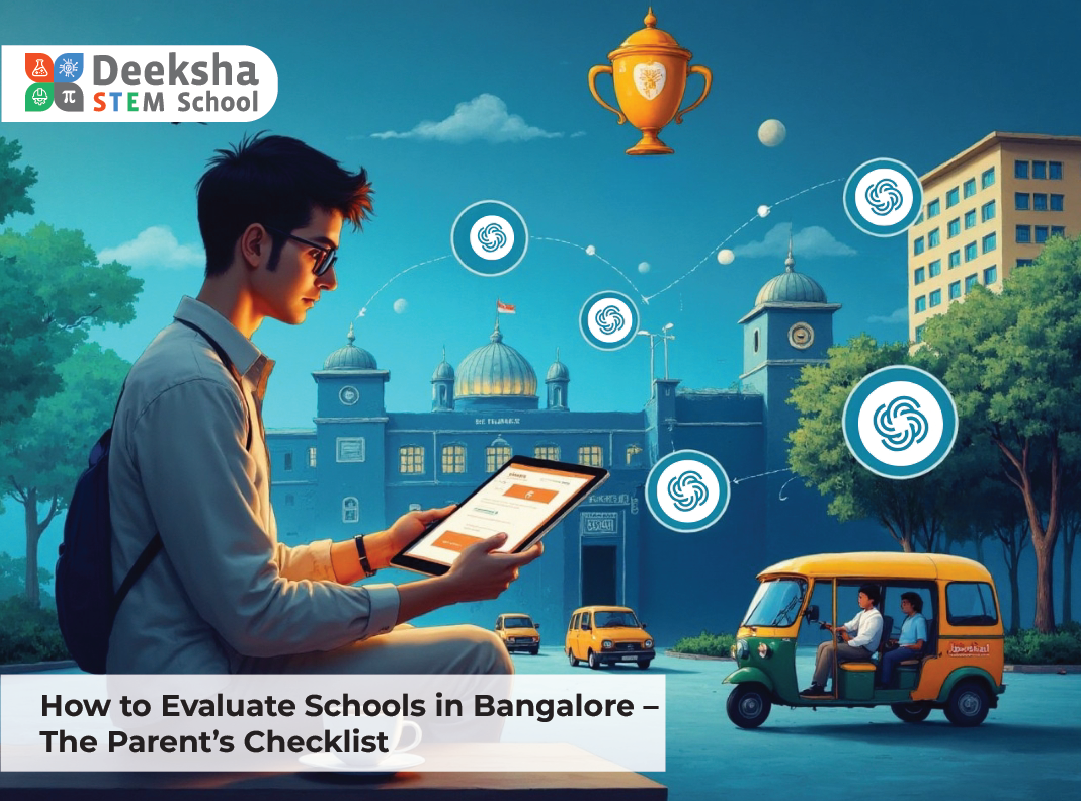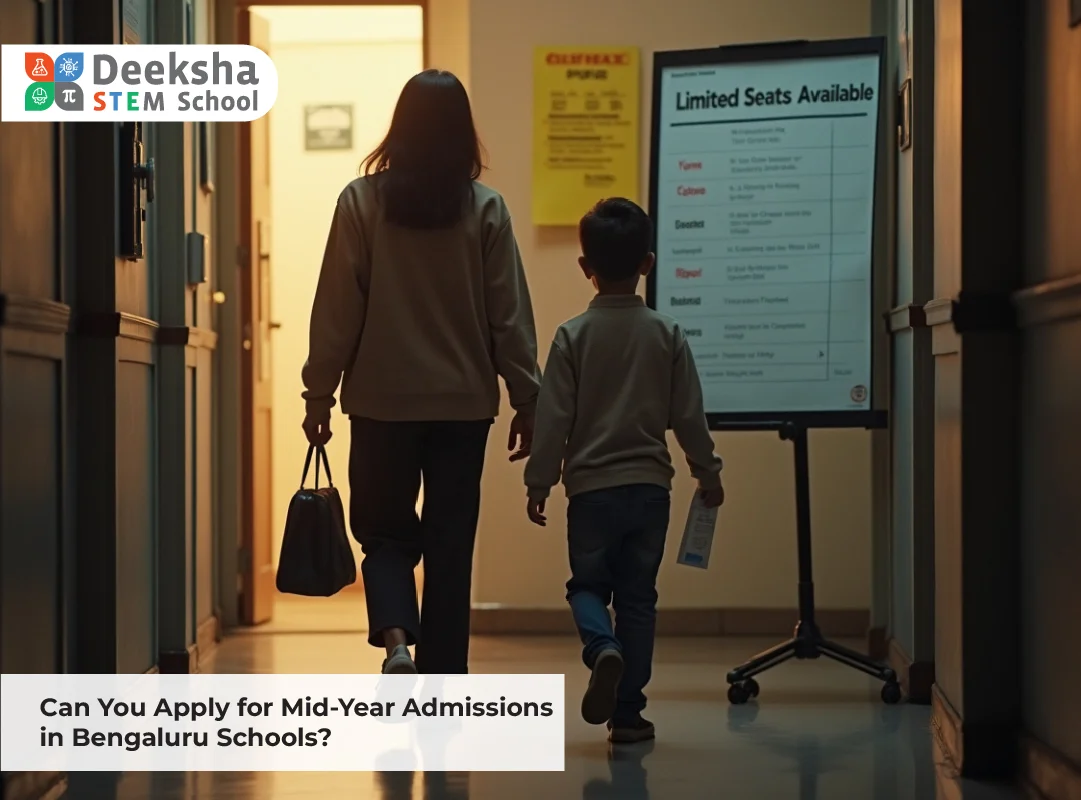School Admission Timeline in Bangalore – When & How to Apply?

Introduction: Understanding the School Admission Process in Bangalore
Navigating the school admission process in Bangalore can be overwhelming, especially with the multitude of schools offering various curricula, such as CBSE, ICSE, State Board, and International Baccalaureate (IB). Each school follows a different timeline and has specific admission requirements. However, with the right knowledge and preparation, parents can significantly reduce the stress of the admission process.
Understanding when to apply, what steps to take, and the specific timelines for various activities can help you make well-informed decisions and avoid last-minute rushes. This guide will help you navigate the school admission timeline in Bangalore, ensuring you’re well-prepared for each step of the process.
Key School Admission Timelines in Bangalore
Each school in Bangalore follows its own admission process, but there are common timelines that most schools adhere to. Typically, admission seasons begin in the last quarter of the year and continue into the early months of the new year.
1. Admission Periods: When Do Schools Open for Applications?
- Pre-Primary Schools (LKG/UKG): These admissions generally open as early as November or December of the previous year, with LKG admissions beginning the application process as early as December. Since these classes tend to be in high demand, schools encourage early applications, often as early as December or January.
- Primary and Secondary Schools (Class 1 and Above): Schools for primary and secondary grades usually open their applications from January to March. While Class 1 admissions typically start in January, for higher grades, admission is usually granted based on availability or after a written test.
- International Schools (IB/IGCSE): Many international schools in Bangalore (offering the IB or IGCSE curriculum) start their admissions in November to December and may extend the application period until January or February, with academic sessions starting in August or September.
- Boarding Schools: Boarding schools typically begin their admission process much earlier, often in October to December, since these institutions often need additional time for accommodation and travel arrangements.
2. Important School Admission Dates to Keep in Mind
- Application Start Date: Schools generally open their applications between December and January, with the application form made available either online or offline. Be sure to check with your preferred school for exact dates.
- Last Date for Application Submission: Most schools will have a deadline for submitting applications, which typically falls between January and March. Be mindful of these deadlines, as many schools operate on a first-come, first-served basis, especially for popular grades like LKG or Class 1.
- Admission Tests/Interviews: Schools that require admission tests or interviews often conduct these between January and March. For younger children, schools may focus on informal assessments, while older children may undergo academic testing in subjects like Math, English, and Science.
- Result Declaration: After completing tests or interviews, most schools announce their admission results by March or April. Keep an eye on emails or school portals for your child’s admission status.
- Fee Payment and Confirmation: After receiving the admission offer, parents are usually given a deadline to pay the admission fees and confirm the seat, typically by April-May. Ensure the fees are paid on time to secure your child’s spot.
Step-by-Step Timeline for School Admission in Bangalore
Step 1: Research and Shortlisting Schools (August – November)
The first step in the admission process is researching schools and narrowing down your choices. Here’s how you can go about it:
- Research Schools Early: Start 6 to 8 months before the admission process begins, especially if you have a particular school in mind. This gives you time to explore the options available in your area, read reviews, and make a list of schools that meet your criteria.
- Visit Schools: Many schools offer orientation sessions or open houses for prospective parents and students. These events are valuable opportunities to understand the school’s values, infrastructure, curriculum, and extracurricular offerings.
- Speak to Parents and Teachers: Reach out to current parents of students in the schools you’re interested in. Their experiences can provide valuable insights into the day-to-day functioning of the school.
- Tip: Make a checklist of your priorities: school infrastructure, distance from home, academic performance, extracurricular activities, and budget. This will help you narrow down your choices effectively.
Step 2: Application Forms and Documents (December – January)
Once you’ve shortlisted the schools, it’s time to gather the required documents and fill out the application forms.
- Fill Out Application Forms: Most schools release their application forms in December or January. Schools with an online application system allow you to fill out the form and upload documents digitally. Others may still use offline forms.
- Tip: Start filling out the application form well in advance. Ensure you have all the required documents, such as birth certificates, proof of residence, and passport-size photographs.
- Submit Required Documents: Along with the application, most schools ask for a set of documents for verification. Commonly required documents include birth certificates, medical certificates, previous school records (for older grades), and residence proof.
- Tip: Ensure all your documents are up-to-date and legible. Incomplete or outdated documents could cause delays in the application process.
Step 3: Admission Tests and Interviews (January – March)
Once you’ve submitted the application, most schools conduct an admission test or interview.
- Test for Younger Children (LKG/UKG): For younger students applying to LKG or UKG, schools may conduct informal assessments to check basic skills like color recognition, shapes, and simple pre-school tasks. These tests are often fun and meant to gauge developmental readiness rather than academic knowledge.
- Test for Older Students (Class 1 and Above): For older students applying to Class 1 and higher, schools may conduct written tests in core subjects like Math, English, and Science. The tests help schools assess the academic level of the child.
- Parent Interviews: Schools often interview parents to discuss their child’s learning style, development, and alignment with the school’s values and philosophy. Be prepared to answer questions about your child’s strengths, weaknesses, and goals.
- Tip: Prepare your child for any tests by revising basic concepts, but don’t over-stress them. Keep the atmosphere relaxed and positive to ensure they perform well.
Step 4: Results and Seat Confirmation (March – April)
After the tests and interviews, you will receive the school’s decision regarding admission.
- Result Announcement: Schools typically announce the admission results by March or April. You will receive either an admission letter or a waiting list notification. Some schools have a first-come, first-served policy, while others may have a lottery system or select students based on merit.
- Confirm Admission: Once you receive an admission offer, you will be asked to pay the required admission fees and confirm the seat. The fee payment deadline is generally within 2-3 weeks of receiving the offer.
- Tip: If you are applying to multiple schools, keep track of all admission deadlines and confirm your child’s seat as soon as possible to avoid losing it to another applicant.
Step 5: Fee Payment and Finalization (April – May)
- Fee Payment: After confirming the seat, schools require you to pay the admission fees, tuition fees, and other charges like transport, uniforms, and books.
- Tip: Clarify the total fee structure, including any hidden charges that may apply, before making the payment. Some schools may offer discounts or financial aid for certain categories of students.
- Kit Collection: After the fees are paid, schools usually provide an admission kit, which includes books, uniforms, and other important documents for the school year.
Step 6: Preparing for the First Day of School (May – June)
Now that the admission process is complete, it’s time to get your child ready for their first day of school.
- Orientation Programs: Many schools hold parent orientation sessions before the school year begins. These sessions are a great opportunity to familiarize yourself with school policies, meet the teachers, and understand the daily routines.
- Child Preparation: Talk to your child about school life, routines, and what to expect. Help them feel excited about starting school. Organize their uniforms, stationery, and school bag well in advance.
- Tip: Visit the school campus beforehand with your child to help them get familiar with the surroundings. This can reduce first-day anxiety and help them adjust quickly.
FAQs
- When should I start the school admission process in Bangalore?
It’s recommended to start researching schools and preparing documents 6 months before the admission season starts. This gives you enough time to make an informed choice. - Can I apply to multiple schools?
Yes, you can apply to multiple schools to increase your chances of securing a seat. However, make sure you carefully read the admission guidelines for each school. - What if I miss the application deadline?
Some schools may allow late applications or have a waiting list. It’s always better to apply early, but check with the school for any alternative options.
Conclusion: A Smooth and Organized Admission Journey
The school admission process in Bangalore can be complex, but understanding the timeline and steps involved makes the process more manageable. By starting early, researching schools thoroughly, preparing the required documents, and following the key timelines, parents can ensure a smooth and stress-free admission experience.
Good luck with your child’s school admission process, and may this be the start of an exciting educational journey!




